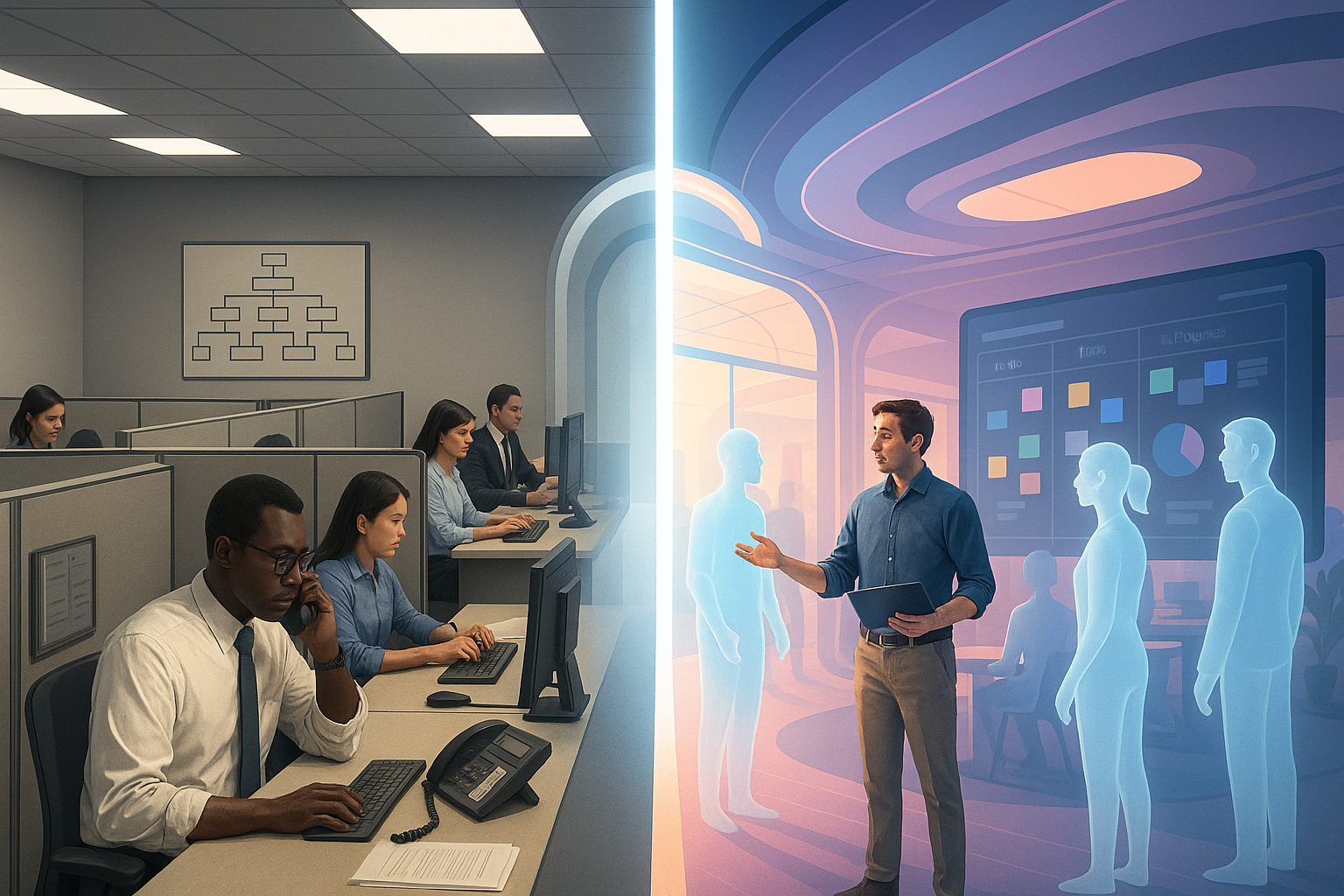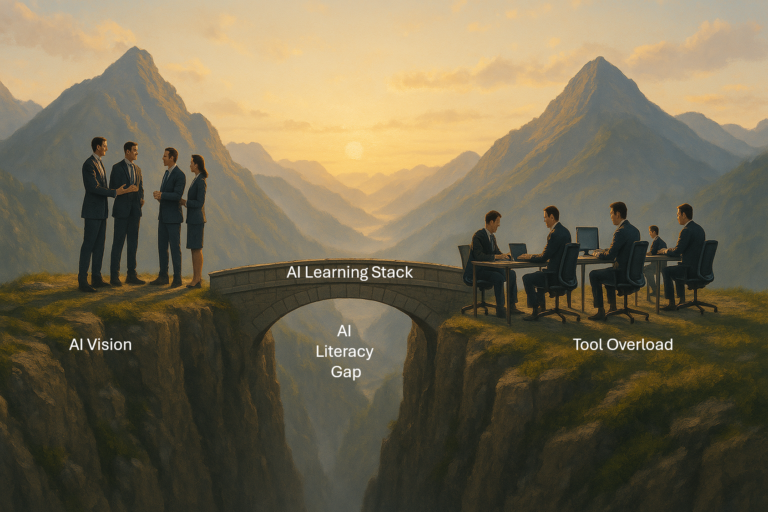Frontier Firms. Agent Bosses. Work Charts. When Microsoft released its 2025 Work Trend Index last week, it introduced a bold new vocabulary for the future of work. The report paints an ambitious future: organizations infused with AI agents, employees managing digital teammates, and work being reimagined around dynamic tasks rather than static job titles. The vision feels inevitable. But the path from aspiration to execution remains ambiguous.
As someone working at the intersection of AI transformation, workforce enablement, and responsible adoption, I found the report both validating and ripe for critical reflection.
There is progress. But the missing middle, the messy reality of change, is underexplored. Here’s where I believe the conversation needs to delve further.
What the 2025 Work Trend Index Highlights
Microsoft’s research captures several critical shifts underway:
- Top-Down AI Transformation: AI is no longer the domain of grassroots experiments. Leadership teams are now setting the pace, integrating AI into core strategies.
- Capacity Gaps: 82% of leaders believe this is a make-or-break year to rethink strategy and operations. Human time and energy alone can no longer meet rising business demands.
- Scaling with Agents, Not Hiring Alone: 80% of leaders plan to expand workforce capacity through AI agents rather than traditional headcount.
- The Rise of Work Charts: Traditional org charts are giving way to more fluid “work charts,” reflecting dynamic, job-to-be-done structures across humans and AI.
- The Persistent AI Literacy Gap: Despite a year of intense focus, AI literacy remains the top skill gap, unchanged from the previous year’s survey.
Microsoft also frames the evolution in three phases: from Assistants to Agent Teams to Agent-Operated Workflows.
The promise? Moving from productivity gains to opportunity value – creating new markets, services, and human-AI collaboration models at speed. It’s a powerful blueprint.
But the gaps between ambition and operational reality is where the real work lies.
Where the Challenges Surface
- AI literacy is still conceptual, not operational: Many organizations recognize the need for AI literacy. Few have translated that recognition into systemic, practical, hands-on learning at scale. Without human-centered change management and trust-building over time, literacy remains a checkbox, disconnected from the real adoption challenges employees face.
- Organizational friction is underestimated: Deploying AI agents into existing enterprise workflows, processes, and decision systems without reimagining them creates silent resistance. Cultural inertia, outdated leadership mindsets, and rigid structures will damp adoption long before new work charts take hold.
- Innovation is outpacing readiness: While AI tools and agent capabilities are evolving monthly, most enterprise transformation frameworks are still designed on multi-year horizons. Companies are aiming at moving targets without the operational agility to adapt quickly enough.
- Leadership competencies are evolving – but unevenly: Managing a team of humans requires one set of skills. Managing a dynamic human-agent ecosystem demands another. Yet few leadership development programs today are preparing managers to oversee, evaluate, and coach hybrid human-AI teams effectively.
My Perspective on Building Real Frontier Firms
The ambition outlined in the Work Trend Index is essential. But organizations cannot technology their way into becoming Frontier Firms. Transformation must be human-centered, not just tech-centered.
In my view, building real Frontier Firms will require:
- Embedding human-centered AI literacy that empowers employees to lead, not just interact with AI.
- Redesigning workflows for dynamic collaboration between people and agents, not just overlaying AI on legacy systems.
- Leading change as a trust-building process, not an announcement. Transformation will not be won in all-hands meetings. It will be won through sustained, intentional leadership behaviors.
- Developing leaders to manage ecosystems of human and AI collaboration – evaluating outcomes, coaching teams, and adapting rapidly.
- Scaling opportunity, not just productivity. The true value will come from faster market creation, service innovation, and human-AI creativity – not incremental task automation.
Productivity gains are no longer enough to compete. The next era of leadership will belong to those who can create new forms of value through agile, responsible, and human-centered innovation.
Final Thoughts
Reading the Work Trend Index, I found myself both energized and cautious. The blueprint for the future of work is evolving quickly with many predictions and aspirations. But building it will require confronting harder, messier realities than any report can fully capture. With the increasingly rapid pace of technology innovation driving AI transformation, organizations may mistakenly believe that success centers around deploying new technologies. The reality is that transformation needs to be done with people not to people. I don’t see the investment or discussion on how might we reimagine work, rebuild trust in a human-machine ecosystem, and intentionally retrain leadership at every level. That is where the real frontier will be decided.
Discover more from DEEPLY Product
Subscribe to get the latest posts sent to your email.

